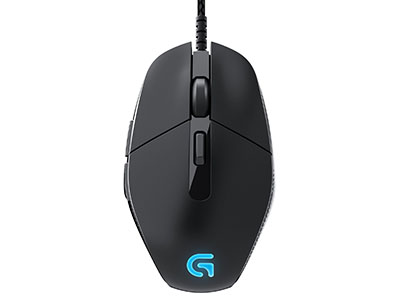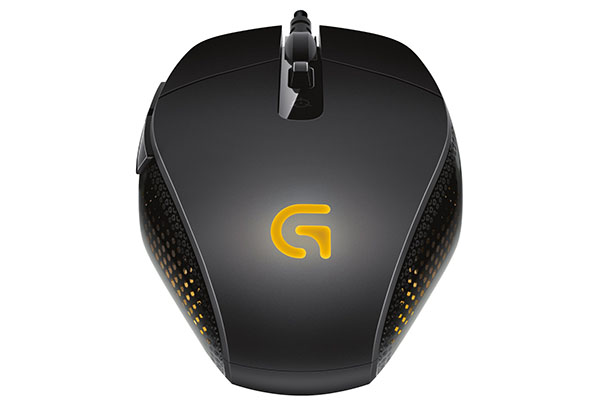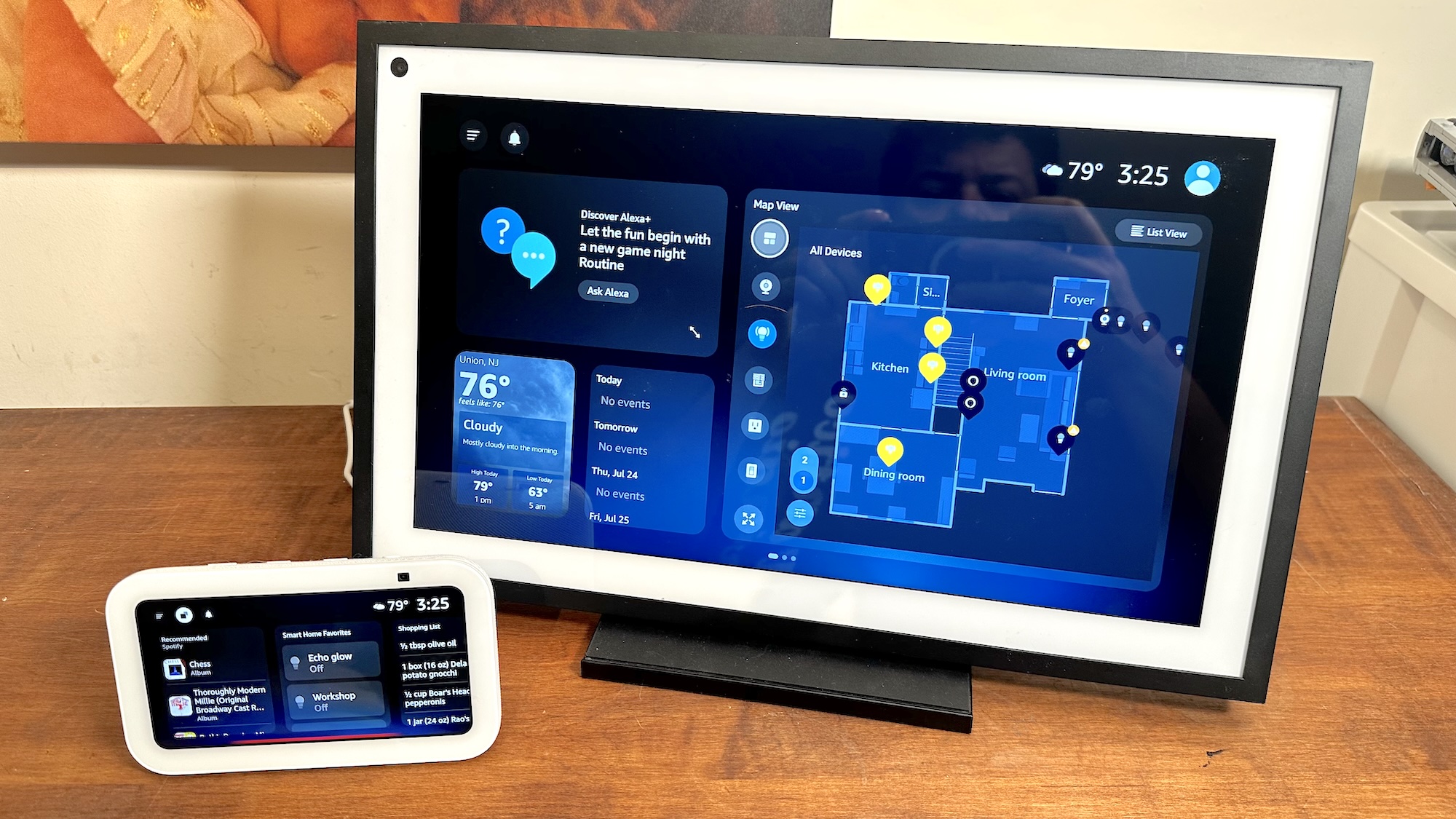Tom's Guide Verdict
The Logitech G303 Daedalus Apex gaming mouse is functional and colorful, and works for just about anyone and any genre.
Pros
- +
Great in-game performance
- +
Pretty, colorful lighting
- +
Intuitive software
- +
Top-notch sensor
Cons
- -
Not as comfortable as comparable mice
- -
Somewhat expensive
Why you can trust Tom's Guide
Calling your product "Apex" is just asking for trouble — unless, of course, it's really, really good, as the Logitech G303 Daedalus Apex ($70) is. Logitech markets the Daedalus Apex as a premium all-purpose gaming mouse that opts for simplicity over customizability, without sacrificing sleek design or gorgeous illumination. While the mouse doesn't do anything unique, the Daedalus Apex is a stalwart companion for almost any genre, and even tournament-level play.
Design
If you've ever played with the Daedalus Prime— Logitech's very similar mouse that's optimized for multiplayer online battle arenas (MOBAs) — you'll be familiar with the Daedalus Apex's design, which is nearly identical to the Prime's. It's simple and low-to-the-ground, and prioritizes usability over comfort. Thanks to its almost-symmetrical design, there's no thumb rest and no coarse textures, but if you're looking for performance above all else, its pointed angles and slick design work well.
MORE: Best Gaming Mice
There are six buttons on the Daedalus Apex: a left-click button, a right-click button, a clickable scroll wheel, a dots-per-inch (DPI) sensitivity shift and two thumb buttons. As with the Daedalus Prime, each button is a delight to press, offering just enough resistance, and the scroll wheel is one of the best that Logitech has ever put out.
At first, I didn't think the Daedalus Apex would be very comfortable for everyday use, since the mouse that inspired it was designed with MOBA games in mind. However, the Apex did eventually win me over. While the two pointed edges may seem counterintuitive at first, they actually provided a broad, flat place for my palm to rest, even while I was writing articles or surfing the Web.
Illumination
One of the biggest differences between the Daedalus Prime and the Daedalus Apex is the latter's colorful lighting options. While the Prime simply glowed blue and looked pretty, you can supposedly choose from 16.8 million different colors on the Apex. In practice, the colors boil down to a few variations on the basic ROYGBIV spectrum, but it's more than enough to assign a unique color to a profile for each of your favorite games.

Mouse backlighting tends to be hit-or-miss, as colors can sometimes look weak even under regular office lights. The Daedalus Apex has some of the strongest color accuracy I've ever seen on a mouse, from its deep, luxuriant reds to its well-defined purples. (Yellows still look like very sickly greens, but I've yet to meet a mouse with a decent yellow light.
Get instant access to breaking news, the hottest reviews, great deals and helpful tips.
Features
Like most Logitech products, the Daedalus Prime runs on the Logitech Gaming Software, which continues to be one of my favorites in the PC gaming world. The software scans your computer for games and then automatically assigns a profile to each one, complete with game-specific display icons and keyboard commands. From there, you simply drag and drop your desired command onto a mouse button, pick a color scheme for your profile, and you're good to go.
One of the key differences between the Daedalus Prime and the Daedalus Apex is the latter's sensor. This time around, Logitech went with a more versatile optical sensor that ranges from 200 to 12,000 DPI. While you may not get much use out of the higher settings unless you use three (or more) monitors, this should please everyone, from the twitchiest first-person-shooter fan to the most relaxed turn-based-strategy aficionado.

Like Logitech's best-in-class Proteus Core mouse, the Daedalus Apex also features surface tenability, letting you play equally well (in theory) on anything from a fancy mouse pad to a sheet of loose-leaf paper. This feature works surprisingly well, and adapts to your current setup rather than forcing you to buy yet more equipment.
Performance
I tested the Daedalus Apex with Titanfall, StarCraft II: Heart of the Swarm, Assassin's Creed Unity and Star Wars: The Old Republic, and found that it performed well across every genre. Switching DPI on the fly was especially helpful while hunting down enemy pilots in Titanfall, while pinning the attack-move command to a convenient thumb button helped me control my armies more efficiently in Heart of the Swarm.

The Daedalus Apex did not have any particular standout genres, although it's worth noting that this is probably not the ideal mouse for hardcore massively multiplayer online players. With only two thumb buttons (and one for DPI, which can be repurposed), it's not enough to account for all the skills a top-tier player would need. On the other hand, it's nice and minimalist for those who lean toward first-person shooters or real-time strategy titles, even at a competitive level.
MORE: Best Gaming Keyboards
Bottom Line
I was skeptical of Logitech's attempt to repurpose a MOBA-optimized mouse as something all-purpose (especially since it already has a perfectly good all-purpose mouse in the Proteus Core), but the Daedalus Apex proved its worth across a variety of situations. Whether competitive or casual, single-player or multiplayer, and whether you like to tweak every last setting or use it out of the box, the Daedalus Apex wants to be all things to all gamers, and mostly succeeds.
Although $70 is a lot to ask for a fairly simple gaming mouse (the much more complex Proteus Core is only $80), the Daedalus Apex offers a lot to like. It's functional, it's colorful and it works for just about anyone and any genre. If you can give up a little comfort for a lot of performance, this mouse is worth checking out.
Marshall Honorof is a senior writer for Tom's Guide. Contact him at mhonorof@tomsguide.com. Follow him @marshallhonorof. Follow us @tomsguide, on Facebook and on Google+.

Marshall Honorof was a senior editor for Tom's Guide, overseeing the site's coverage of gaming hardware and software. He comes from a science writing background, having studied paleomammalogy, biological anthropology, and the history of science and technology. After hours, you can find him practicing taekwondo or doing deep dives on classic sci-fi.
-
Loeb In this day and age, there is no excuse for a corded mouse. My old Logitech G7 cordless gaming mouse is for me the pinnacle of mouse design.Reply -
ldun ReplyIn this day and age, there is no excuse for a corded mouse. My old Logitech G7 cordless gaming mouse is for me the pinnacle of mouse design.
Personal taste? I prefer corded over wireless on pretty much everything
-
Marshall Honorof I'm of two minds about wireless mice. On the one hand, it's pretty hard to argue with how reliable corded mice are. They're going to work, period.Reply
On the other hand, a lot of gamers are suspicious of wireless mice because of issues like lag or interference. These were problems with early wireless mice, true, but wireless mice have been reliable enough for gaming purposes for years now. If you're a tournament player, I see why you might want to use a corded mouse on the one-in-a-million chance that the signal cuts out, but otherwise, most wireless mice are just fine.
I would personally like to see more high-quality wireless gaming mice on the market (and we really need a real wireless gaming keyboard; it's baffling that no major company has put one out yet), but on the other hand, never having to charge a corded mouse is nice.

